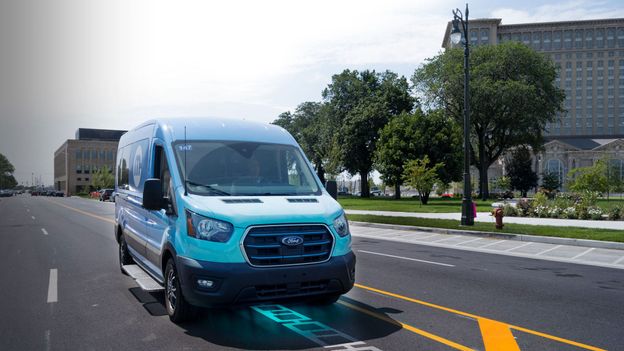Wireless charging: The roads where electric vehicles never need to plug in

In Europe, France has plans to build 5,500 miles (8,850km) of electrified roads by 2035 using either overhead cables, rails or induction charging, while studies in Germany have recommended installing 2,500 miles (4,000km) of overhead cables or inductive charging infrastructure on the country’s Autobahn. Sweden has estimated it will cost around SEK30-40bn (£2.3-3bn/$2.9-3.8bn) to build approximately 1,200 miles (2,000km) of electric roads.
Electreon is working on a number of wireless charging pilots across Europe, including a project to electrify a portion of the German Autobahn. In the US, the company is building a wireless charging roadway with Utah State University for its National Science Foundation funded research center, Aspire. It also made a bid to electrify the Pennsylvania Turnpike, according to Tongur.
He says to help meet climate deadlines, municipalities can easily add coils to already existing road maintenance schedules to quickly turn them into chargeable assets. And by adding receivers to vehicles, car makers could reduce battery size and the overall cost of EV ownership, which could help to speed adoption.
In passenger vehicles, the competition is heating up. Toyota has a partnership with Electreon to explore wireless charging options, BMW and Ford have been working with Witricity, and Stellantis with Hevo Power. Tesla is believed to be working on its own solution having last year bought, then sold, the wireless charging company Wiferion.
Nonetheless, transformation is coming. In the US, the federal government has set aside billions of dollars for its National Electric Vehicle Infrastructure (Nevi) programme and Charging and Fueling Infrastructure (CFI) program to fund the building of high-speed charging for the nation’s highways and places where people live, work and shop. The goal of the Biden Administration is to create 500,000 publicly available chargers by 2030 – with wireless charging roads possibly playing a part.
“As we think about transitioning from the internal combustion engine to zero emissions vehicles, we have to think about systems that allow for people to transition,” says Johnson. “It is less about range anxiety and more about charging reliability – that will help consumers make informed decisions.”
—
If you liked this story, sign up for The Essential List newsletter – a handpicked selection of features, videos and can’t-miss news delivered to your inbox every Friday.
Join one million Future fans by liking us on Facebook, or follow us on Twitter or Instagram.

